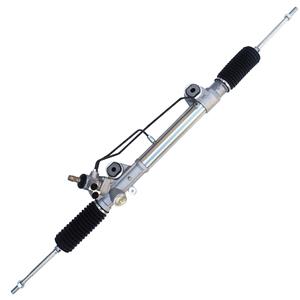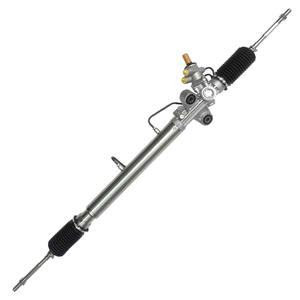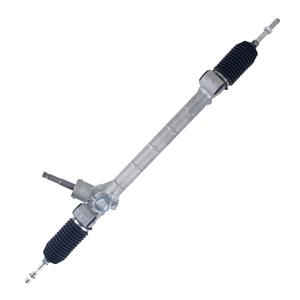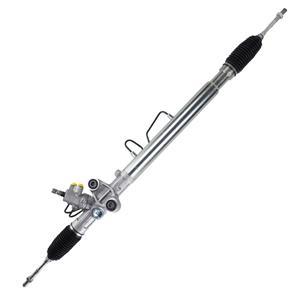-
The work of the electric power steering system begins with the steering force sensor (Torque Sensor). When the driver turns the steering wheel, the sensor monitors the rotational torque on the steering wheel in real time. This information is transmitted to the vehicle's electronic control unit (ECU), and the ECU determines how much steering assistance is needed based on this information.
-
1001-2025
How to Calibrate a Power Steering Rack?
Steps for calibrating the power steering rack 1. Lift the front of the vehicle 2. Loosen the steering rack connection components 3. Adjust the steering wheel position 4. Measure and adjust the rack position 5. Tighten the rack connection components 6. Check and calibrate the steering wheel position 7. Test the steering system
-
The hydraulic power steering rack and the four-wheel alignment seem to be two independent systems, but their working conditions are closely related. Although the hydraulic power steering rack mainly affects the steering ability of the vehicle, its good or bad condition will also indirectly affect the performance of the four-wheel alignment.
-
When the steering rod is damaged or worn, the wheel may not turn smoothly. At this time, when the driver turns the steering wheel, he will feel a delay or instability in the wheel rotation, resulting in slow steering response, affecting the driving experience and control.
-
The cost components of replacing a hydraulic power steering rack are: 1. Parts cost 2. Labor cost 3. Diagnostic cost 4. Other additional costs 5. Additional costs In some cases, if the damage to the hydraulic power steering rack is caused by other system problems, such as steering pump failure, hydraulic line leakage, etc., these related parts may need to be repaired, thereby increasing the overall repair cost.
-
The hydraulic power steering system (HPS) is mainly composed of a power steering pump, hydraulic pipelines, steering rack, and steering cylinder. The core idea is to generate hydraulic oil pressure through a hydraulic pump and transmit this pressure to the hydraulic cylinder in the steering rack to provide steering assistance.
-
2012-2024
Is the hydraulic power steering rack of a B-class car more expensive than that of an A-class car?
From the perspective of manufacturing cost, the hydraulic power steering rack of a B-class car may indeed be more expensive than that of an A-class car, mainly because of its complex design, better materials, and more sophisticated manufacturing process.
-
Natural wear and aging are one of the most common reasons for replacing a power steering rack and pinion set. The rack and pinion will constantly rub against each other during long-term use, and although they are usually made of high-strength materials, they will inevitably wear out.
-
A faulty hydraulic power steering rack may make noises such as: 1. Whining Noise 2. Clunking or Knocking Noise 3. Squealing or Screeching Noise 4. Hissing Noise 5. Grinding Noise




